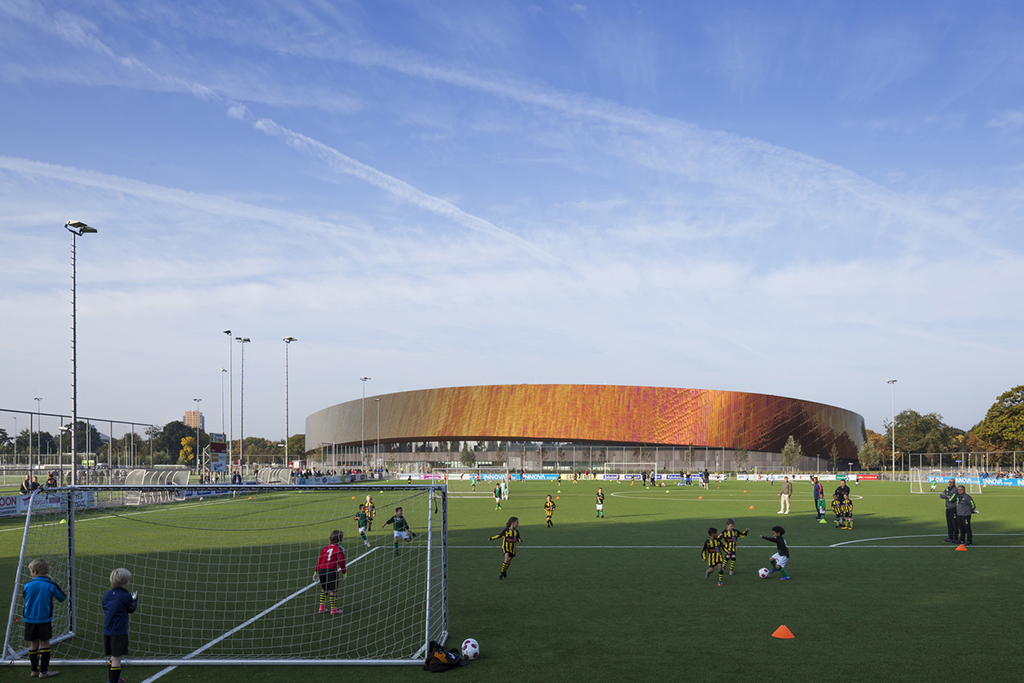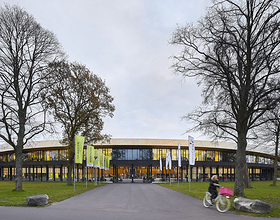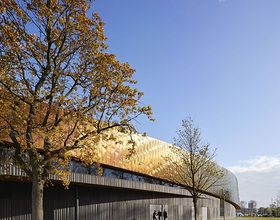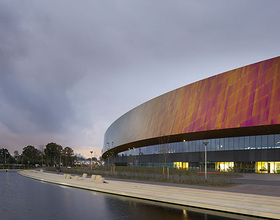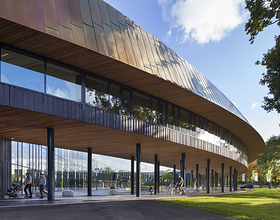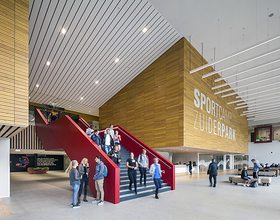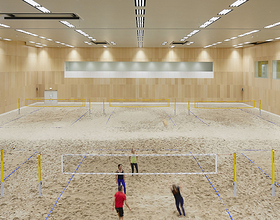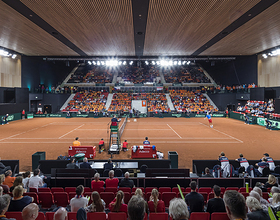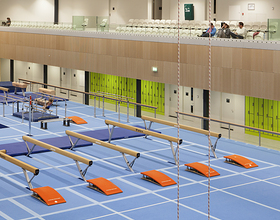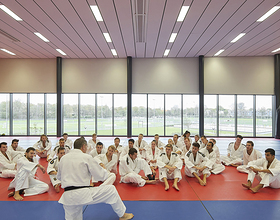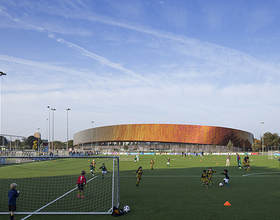SPORTCAMPUS ZUIDERPARK
-
Sportcampus Zuiderpark is much more than a centre of excellence for sport and movement. Located at the heart of the historic Zuiderpark, the €50m sports campus is an innovative collaboration of alliances between education, sport, sport science and the community, for both the Municipality of The Hague and its private partners: the Haagse Hogeschool and ROC Mondriaan.
The overriding aim is to emphasize the importance of sport and exercise through learning and engagement, for the amateur as well as the elite athlete, using sport as the inspiration to deliver a healthier society. The sports campus includes a gymnastics hall, beach sports hall, spectator arena and a multi-purpose sports hall, as well as a variety of sports science and education spaces.
The design solution is an interpretation of the brief to embody within the campus the principles of ‘motion and activity’. This is expressed externally in the fluid movement of the elevational treatment. At ground level, the curved form of the plan is expressed by a simple plinth constructed from textured precast concrete panels.
The upper part of the elevation is expressed as a metallic ‘ribbon’ that narrows and twists to reveal glazing on the elevation. Constructed from brightly polished stainless steel, the dynamic ribbon changes colour with different lighting conditions and cloud patterns as well as reflecting the animation of its natural setting.
As the Zuiderpark is listed as a ‘national monument’, the building has been designed to preserve the unique character of its historic surroundings. The curved nature of the building creates the perception that the building’s edges are retreating into the distance, minimising its visual scale. The largest interior volumes—primarily the areas for sport— have been situated to the rear of the building allowing for the height to be reduced significantly at the front, where the majority of the education spaces are located.
The high sided rear elevation has been positioned to respond directly to the urban city context whilst the front elevation responds at a human scale to the public parkland. Here, an animated entrance courtyard acts as an extension to the park, creating a physical link between the campus and the main approach routes.
Photo credits: Scagliola Brakkee, Arjen Schmitz, Hufton+Crow
1870 Projects

